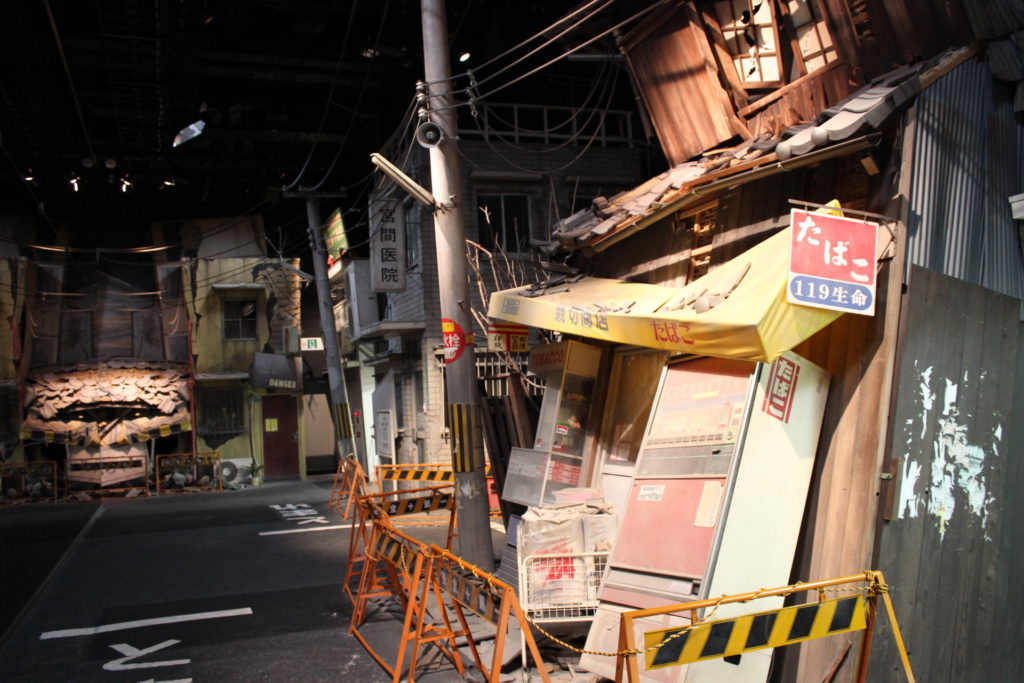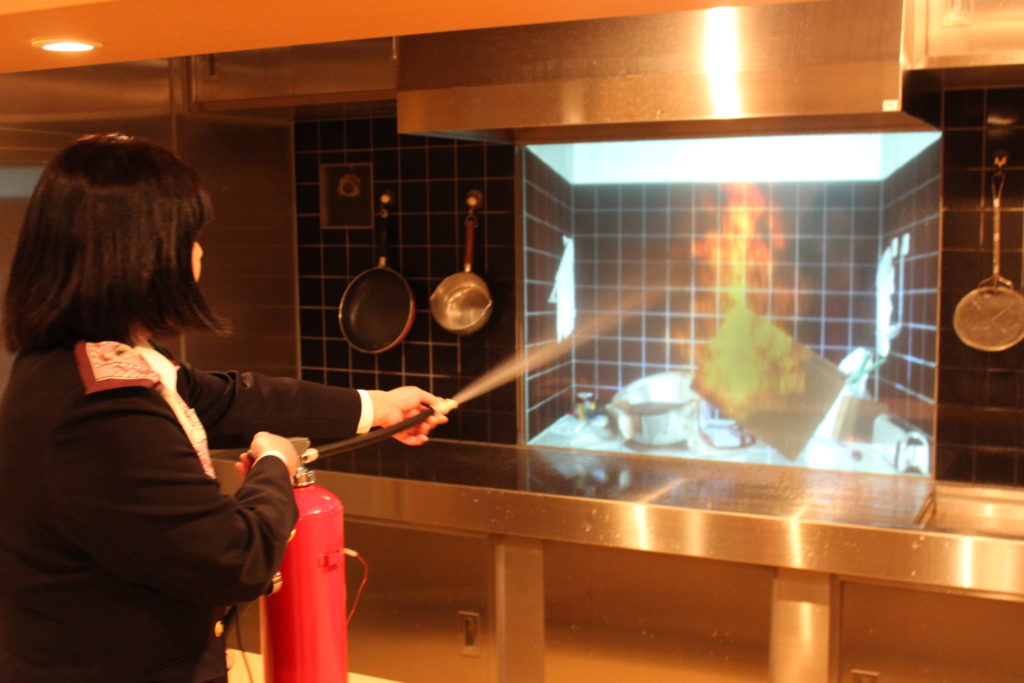
Since the Great East Japan Earthquake and Tsunami of March 11, 2011, the public’s awareness of disaster prevention measures has increased greatly. Now more people have been visiting Osaka City Abeno Life Safety Learning Center. According to the female receptionist, “It’s become more common to see more visits by family groups.” One reason for this is many youngsters are now too young to be familiar with the Hanshin Earthquake that struck the region in January 1995.

Inside the center is a reproduction of a section of the shopping street in a devastated condition, which demonstrates the differences depending on a building’s degree of reinforcement and earthquake damage. Japan has many similar Safety Learning Centers, but they rarely offer actual-size dioramas found here, by which visitors can learn how dangerous it can be to stand close to a crumbled building. Electricity, as well as gas, can still be connected so it is better stay away from power lines and never use fire or not walk under sign boards which might fall unexpectedly. A group of university students were visiting as a part of extracurricular work, and this diorama display was realistic enough to scare them out of their wits.

In addition, visitors can visit demonstration corners to receive a lesson in dealing with fires that break out following an earthquake; how to use a fire extinguisher and summon an ambulance; methods of escape from a smoke-filled building; how to dispense first aid; and experiencing a major shake. They will receive instructions in evacuation, rescue, handling of flame-retardant materials and other disaster preparations. The female guide recommends that “You should review methods of how to contact family members in case of an emergency and confirm evacuation routes. Also you should check to make sure you have emergency food supplies, a radio, batteries and other necessities. The most dangerous thinking is ‘No disaster will happen; I’ll be all right,’” she warns. So the best way to be prepared is through regular practice drills that take to heart the awareness that “You are responsible for protecting yourself.” One way to do this is to experience simulated situations at Bosai Center (Life Safety Learning Centers) located around the country. Hitoshi Imamura at Tokyo’s Ikebukuro Life Safety Learning Center said, “People who hadn’t been to the center before came often after 3.11. They are mostly groups of university students and business people.” He told us even with the decrease in foreign visitors, the total number of visitors has increased and the demand of emergency items has changed. “Before 3.11, radios, whistles, or emergency provisions had been selling well, but now visitors buy heavier and more practical items like disposable toilets, helmets, thermal blankets and so on.” Why don’t you take time to visit one of those facilities? They usually provide foreign-language pamphlets.

<Osaka City Abeno Life Safety Learning Center>
Hours: 10:00 a.m. ~ 6:00 p.m.
Holidays: Wednesday and the last Thursday of each month
Admission: Free of charge
Inquiries: (06) 6643-0131



0件のコメント